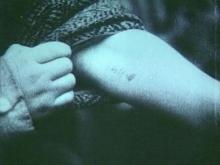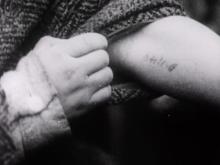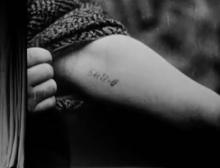Judgment at Nuremberg
JUDGMENT AT NUREMBERG, Stanley Kramer, USA 1961
JUDGMENT AT NUREMBERG is counted among the early postwar films dealing with the Holocaust. Except for unique cases like Orson Welles' THE STRANGER (1946), Stanley Kramer’s film from 1961 is together with George Stevens’ THE DIARY OF ANNE FRANK (1959) considered an early attempt of US-American cinema to deal with this topic. The film depicts an American judge who serves in a trial against German judges and lawyers that participated in Nazi crimes. The story is loosely connected to the historic Nuremberg Judges’ Trial in 1947. A significant scene shows how the courtroom transforms into a cinema. Filmic evidence is projected, accompanied by a voice-over of the American prosecutor. Referring to the actual screenings of liberation and atrocity footage during the trial of the International Military Tribunal in Nuremberg, the sequence shows a variety of historical visual records filmed by the allies in different concentration camps and at other atrocity sites. This compilation, which is clearly marked as a film-in-film screening and therefore, a meta-mediation of historical footage, also contains the sequence with the Number Tattoo in Auschwitz. However, this particular series of shots, represents a significant point in the film’s plot. It triggers the judging processes of two main characters. While the American judge lowers his sight in reaction to the projection of the shot with the Number Tattoo, the German defendant—until that point categorically denying responsibility—looks at exactly that moment for the first time towards the screen. This gesture is marked as a turning point that leads to the final transformation of the character
The accentuation of these shots and of the visual trope of the Number Tattoo, on the one hand, illustrates that the sequence was already iconic in 1961. On the other hand, its generic illustration of the Nazi crimes has decontextualizing and typifying effects. Implicitly resonating with the testimony of a victim of forced sterilisation, the number signifies the dehumanising impact of the Nazi ideology.





